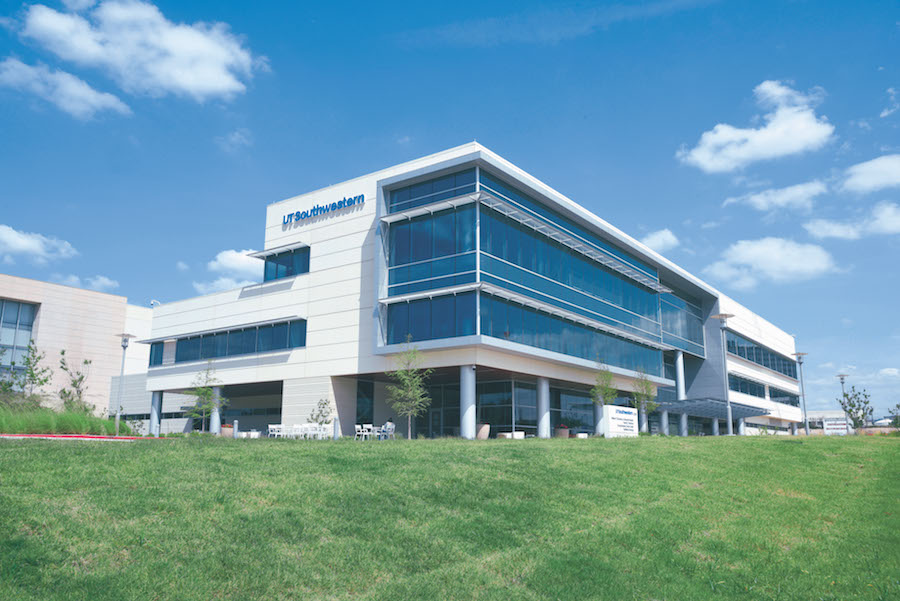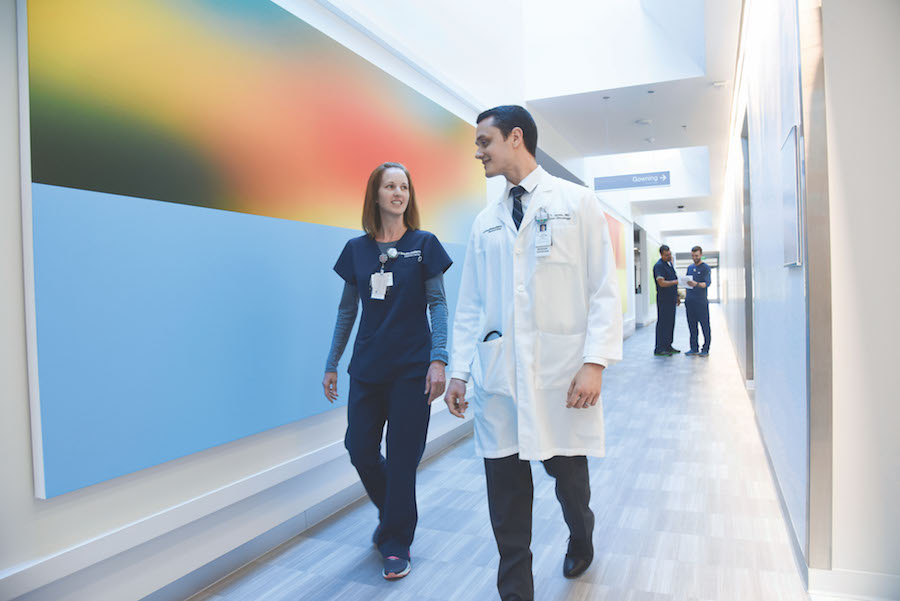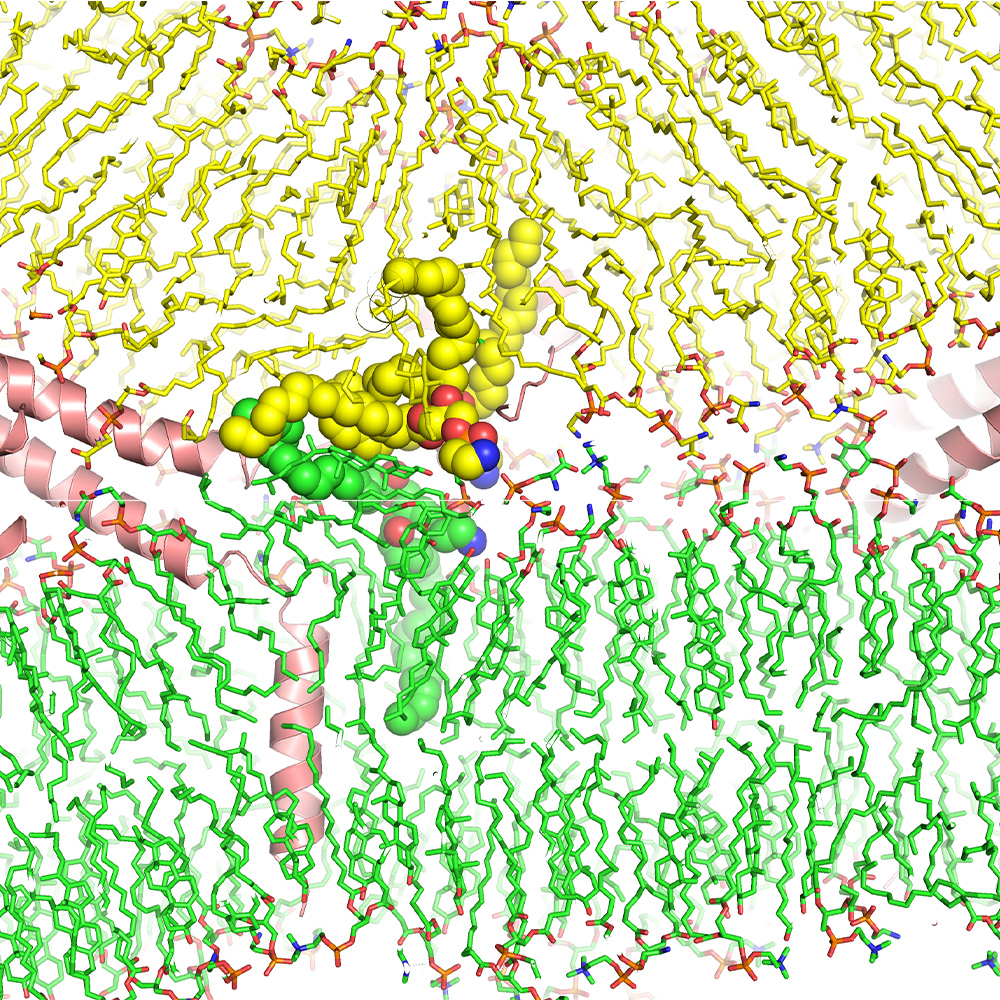Innovation, personal touch hallmarks of new Radiation Oncology building


In April 2017, patients began walking through the doors of the uniquely designed UT Southwestern William P. Clements Jr. University Hospital – Harold C. Simmons Comprehensive Cancer Center Radiation Oncology building.
With 63,000 square feet of space on three floors, it is the second largest radiation oncology facility in Texas, but its large glass windows, bright modern art, and textured walls make it feel more like a combination of Google headquarters and a soothing spa.

“This building was designed to focus on patients – their outcomes, their safety, their entire healing experience here,” explained Dr. Hak Choy, Chair of Radiation Oncology. “We wanted to build a colorful, cheerful space for our patients and I believe this is probably the most patient-centric center you will see. From the very beginning, we wanted to put together a facility that’s not only state of the art but also modern and patient-friendly in design,” Dr. Choy added. “We were determined that it be structured in such a way that it would enhance the delivery of quality care, create efficient patient management, promote collaboration among caregivers, and ensure high levels of safety.”
Inside the building’s walls are some of the most technologically advanced pieces of equipment for treating cancer, including the next-generation CyberKnife robotic radiosurgery system, which delivers radiation with micro precision to preserve surrounding tissue. UT Southwestern has more experience with the CyberKnife than any other center in Texas, and the new model – the M6 – uses robotics and computer technology to check its accuracy while it’s treating patients.
The building features other innovations to enhance patient care, such as a real-time location tracking system that alerts if patients have been waiting too long or when someone is ready for the next procedure. Each major disease site – such as brain, breast, or gastrointestinal cancer – has its own dedicated area.
“That framework is consistent with how the Radiation Oncology Department treats cancer,” said Dr. Choy, who holds The Nancy B. and Jake L. Hamon Distinguished Chair in Therapeutic Oncology Research. “Each physician specializes in the treatment of a particular cancer type, enabling individual specialists to bring familiarity and expertise to each patient encounter.”




